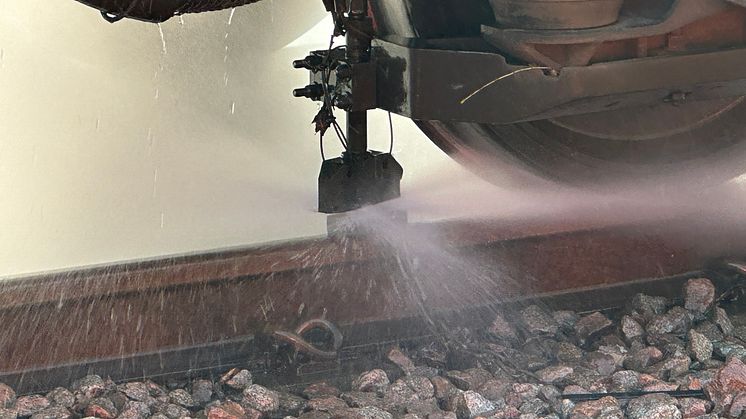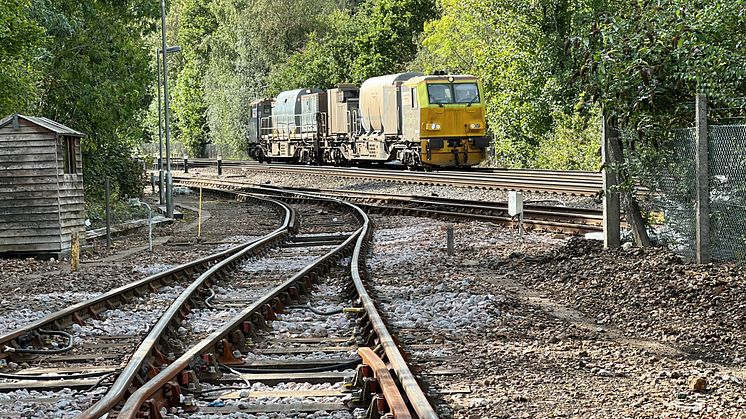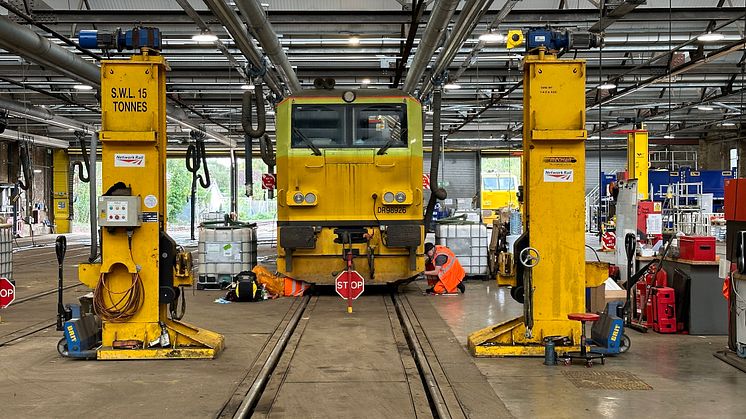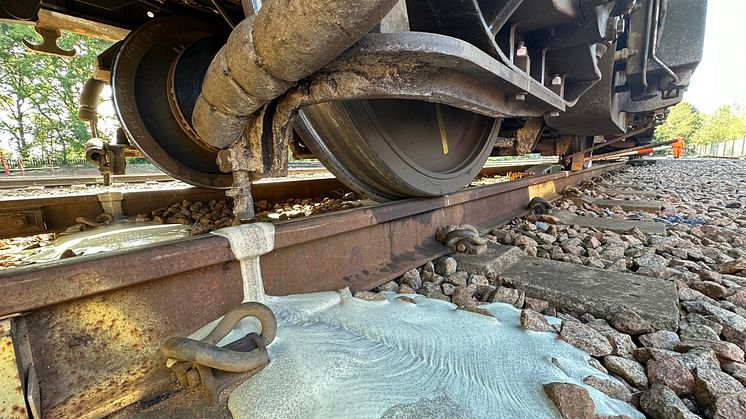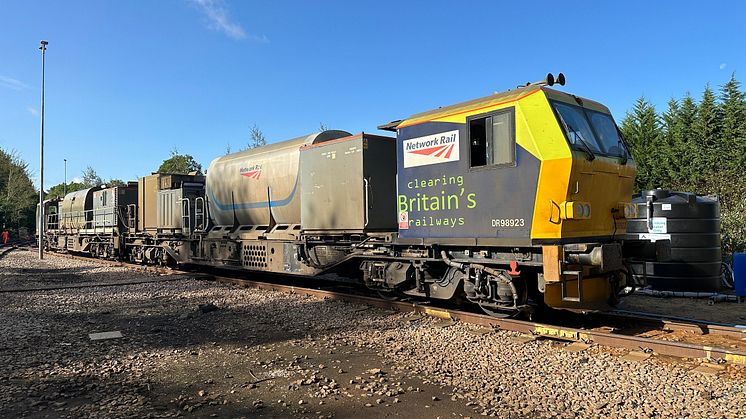
Press release -
Catching the fall: Network Rail gearing up to ready the railway for autumn
Network Rail have issued the following press release about preparation for autumn:
- Leaves on the line are no joke – autumn is the railway’s most challenging season
- Our fleet of 25 specialist leaf-busting trains are working round-the-clock to jet wash the rails and clear leaves from the line to keep passengers moving
- This year, the fleet is expected to travel the equivalent of 12 times around the Earth
Across Network Rail’s Southern region – which covers the railway in the south of England from Weymouth to Brighton to Dover – a fleet of ‘leaf-busting’ trains will be in action to keep the railway leaf free and running reliably this autumn.
19 trains known as Windhoff Multipurpose Vehicles (MPVs) and 6 trains called RHTTs (rail head treatment trains) will operate from the region’s seasonal delivery depots in Effingham, Horsham and Tonbridge.
The specialist trains are equipped with high pressure water jets to blast leaves off the lines and where necessary apply a sand-like gel to help trains grip the rail better.
Operating until mid-December, they will treat a total of 318,000 miles of track – roughly 12 times around the planet – working tirelessly to rid the railway of leaves, snow and ice.
The railway’s black ice
There are millions of trees on or next to the railway and every autumn thousands of tonnes of leaves fall onto the tracks.
The combination of wet weather and passing trains compresses the leaves into a hard slippery layer on the rails. This is the railway’s equivalent of black ice on the roads. Slippery rails make it harder for trains to accelerate and brake effectively, so drivers have to move out of stations more slowly and brake much earlier to stop in time. The build-up of leaves can also create a barrier between the train wheels and the electrical parts of the track that let signallers know where the trains are.
Tackling ice and snow
With climate change blurring the traditional weather conditions expected in each season, Network Rail is also preparing to simultaneously tackle ice and colder weather.
Across much of the railway in the south of England, trains are powered by the conductor rail (also known as the third rail) which can get covered in ice and snow, stopping power reaching trains.
To prevent this from happening MPVs and snow and ice treatment trains (SITT) both scrape ice off the conductor rail head (the top of the conductor rail) and spray the rails with anti-icer.
Giles Baxter, Network Rail’s Sussex route operations and performance manager, said: “Autumn is a really challenging time for the railway, owing largely to the significant amount of leaf fall and wet weather.
“Our teams will be working tirelessly using our 25-strong fleet of specialist trains to treat a total of 318,000 miles of track across the Southern region – roughly 12 times around the planet – to help keep the tracks leaf and ice free so passenger and freight services are able to continue running safely and reliably this Autumn.”
Jenny Saunders, Customer Services Director for Govia Thameslink Railway, said: “Fallen leaves can cause as much disruption as severe winter weather, so over the next few months Network Rail’s pre-emptive activities with their specialised equipment are vital for keeping our customers moving. It’s reassuring to know that this hard work is going on behind the scenes throughout the autumn.
“Over this period, we’ll also be working closely with Network Rail to prepare for winter weather, distributing de-icing equipment, checking stocks of salt and shovels, and making sure our staff are up to date with the safety procedures.”
Contact information
Passengers / community members
Network Rail national helpline
03457 11 41 41
Latest travel advice
Please visit National Rail Enquiries
Journalists
Rob Breckon
Senior Communications Manager - Southern
Network Rail
07395 390759
rob.breckon@networkrail.co.uk
Topics
Categories
For more information, contact the press office on 0203 750 2031.
Govia Thameslink Railway
Govia Thameslink Railway (GTR) operates Thameslink, Great Northern, Southern and Gatwick Express services as follows:
- Thameslink – cross-London services between Bedford/Peterborough/Cambridge and Brighton/Horsham/East Grinstead, and between Luton/St Albans and Sutton/Wimbledon/Rainham; plus services between London and Sevenoaks
- Great Northern – services between London and Welwyn, Hertford, Peterborough, Cambridge and King’s Lynn
- Southern – services between London and the Sussex coast (Brighton, Worthing, Eastbourne, Bognor Regis, Hastings) and parts of Surrey, Kent and Hampshire (Ashford International, Southampton, Portsmouth)
- Gatwick Express – fast, non-stop direct services between Gatwick Airport and London Victoria
www.southernrailway.com, www.thameslinkrailway.com, www.gatwickexpress.com, www.greatnorthernrail.com


